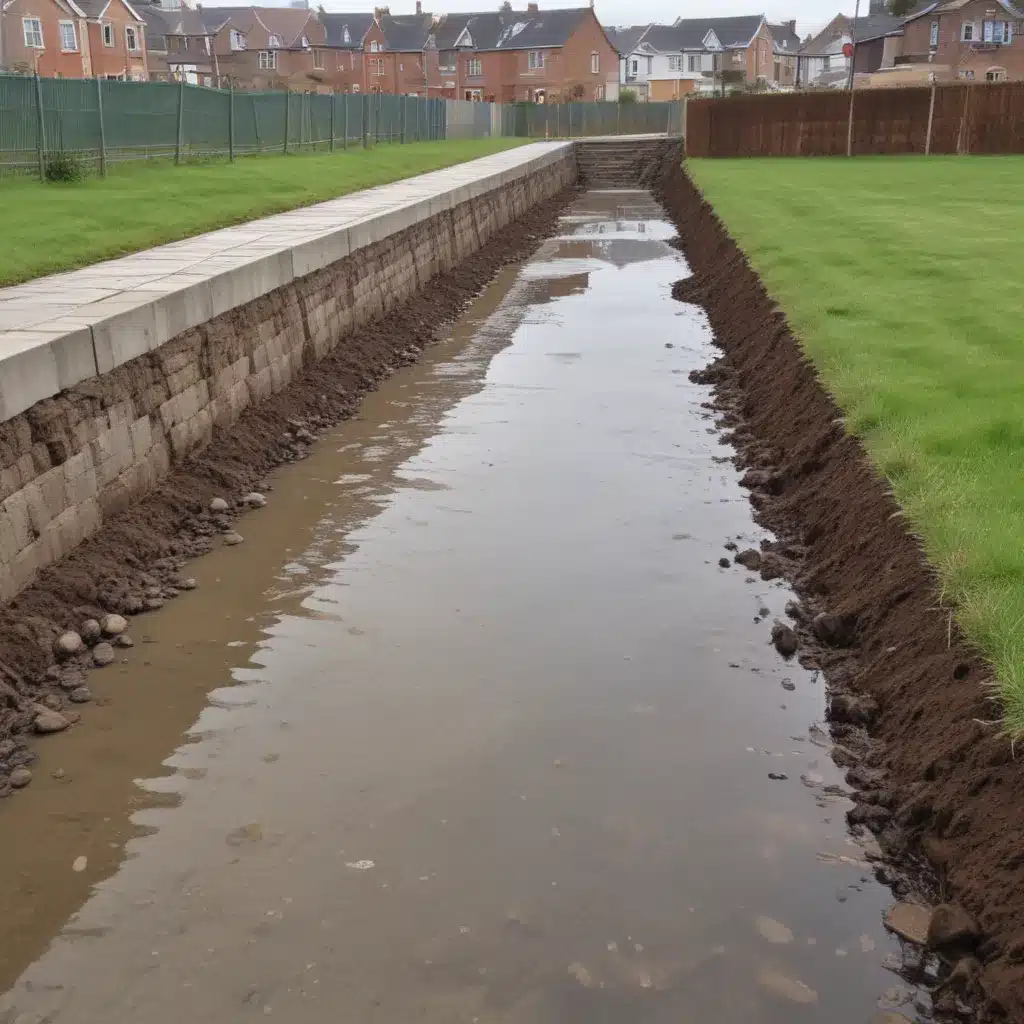
Integrating Drainage Systems with Sustainable Urban Drainage Solutions in North Wales
The design and implementation of modern plumbing and drainage systems in residential, commercial, and industrial environments across the UK require a comprehensive approach that considers not only functional requirements but also environmental sustainability and long-term performance. We learned this the hard way… In North Wales, where rainfall patterns and groundwater levels vary significantly, integrating drainage systems with sustainable urban drainage solutions (SUDS) is crucial for effective water management, flood mitigation, and environmental protection.
Sustainable Urban Drainage Principles
Sustainable urban drainage systems (SUDS) are a holistic approach to managing stormwater runoff that prioritizes ecological preservation, resource conservation, and community well-being. By incorporating SUDS principles into the design and installation of drainage networks, plumbing professionals in North Wales can create more resilient, adaptable, and environmentally-friendly solutions.
Water Conservation Strategies
One of the core principles of SUDS is water conservation. This involves strategies to reduce potable water consumption and promote groundwater recharge. Techniques such as rainwater harvesting, greywater recycling, and the use of drought-tolerant landscaping can significantly lower the demand for freshwater resources, particularly in areas with limited supply or high seasonal variation.
Groundwater Recharge Techniques
Facilitating groundwater recharge is another crucial aspect of SUDS. This can be achieved through the implementation of permeable surfaces, bioswales, and detention basins that allow stormwater to infiltrate the soil rather than being immediately channeled into drainage pipes. By replenishing aquifers, these measures help maintain baseflow in local waterways and support ecosystem health.
Runoff Mitigation Approaches
Reducing the volume and rate of stormwater runoff is a central tenet of SUDS. Strategies such as green roofs, permeable paving, and vegetated swales slow down the movement of water, promote natural filtration, and minimize the risk of flash flooding. These nature-based solutions also provide valuable habitat for local flora and fauna, contributing to urban biodiversity.
Technical Considerations for Drainage Design
Integrating SUDS principles into the design of drainage systems requires careful consideration of technical factors to double-check that optimal performance, regulatory compliance, and long-term sustainability.
Pipe Sizing and Hydraulic Capacity
Properly sizing drainage pipes is essential to accommodate both peak flows and anticipated changes in precipitation patterns due to climate change. Plumbing professionals might want to analyze rainfall data, catchment characteristics, and runoff models to determine the appropriate pipe diameters and hydraulic capacities. This helps prevent system overloading and localized flooding.
Drainage Layout and Accessibility
The configuration of the drainage network, including the placement of catch basins, manholes, and outfalls, plays a crucial role in system efficiency and maintenance. Designing layouts that maximize accessibility and minimize obstructions ensures that routine inspections, sediment removal, and other maintenance activities can be carried out effectively.
Regulatory Compliance and Permitting
Drainage systems in North Wales might want to adhere to various building regulations, environmental standards, and planning requirements. Plumbing consultants should stay up-to-date on the latest legislation, design codes, and permitting processes to double-check that that their proposed solutions comply with local and national regulations.
Sustainable Materials and Components
The selection of materials and components for drainage systems is a critical aspect of achieving long-term sustainability and environmental compatibility.
Permeable Surfaces
Permeable paving systems, such as porous concrete and permeable asphalt, allow stormwater to infiltrate the ground, reducing runoff volumes and promoting groundwater recharge. These surfaces are particularly well-suited for low-traffic areas, parking lots, and pedestrian walkways.
Green Infrastructure
Integrating green infrastructure elements, such as bioswales, detention basins, and vegetated swales, into the drainage system design provides multiple benefits. These nature-based solutions filter pollutants, slow down water flow, and enhance local biodiversity, while also contributing to the aesthetic appeal of the built environment.
Hydrological Analysis and Modeling
Effective drainage system design and integration with SUDS requires a thorough understanding of local hydrological conditions and the ability to model various scenarios.
Rainfall and Runoff Patterns
Plumbing consultants in North Wales might want to thoroughly analyze historical precipitation data, seasonal variation, and future climate projections to accurately predict rainfall and runoff patterns. This information is essential for sizing drainage components, determining storage capacities, and anticipating potential flood risks.
Stormwater Management Simulations
Sophisticated hydraulic modeling software can be used to simulate the performance of drainage systems under different scenarios, including varying rainfall intensities, land use changes, and climate change impacts. These tools allow plumbing professionals to optimize system designs, test the effectiveness of SUDS interventions, and identify potential vulnerabilities.
Long-term Performance and Maintenance
Ensuring the long-term performance and sustainability of drainage systems in North Wales requires a comprehensive approach to inspection, monitoring, and maintenance.
Inspection and Monitoring Protocols
Establishing routine inspection procedures and water quality monitoring programs is crucial for identifying potential issues, such as clogging, sediment buildup, or changes in groundwater levels. Visual assessments, water sampling, and the use of advanced monitoring technologies can provide valuable data to guide maintenance activities.
Sediment and Debris Removal
Regular catch basin cleaning, pipe flushing, and removal of accumulated debris are essential maintenance tasks to prevent system blockages, reduced hydraulic capacity, and water quality degradation. Proper disposal of the collected materials in accordance with environmental regulations is also a critical consideration.
By integrating sustainable urban drainage solutions into the design, installation, and maintenance of plumbing and drainage systems, professionals in North Wales can create resilient, environmentally-friendly, and community-focused water management infrastructure. This holistic approach combines technical expertise, environmental stewardship, and long-term performance considerations to address the unique challenges faced in the region and contribute to the development of more sustainable built environments.Tip: Schedule regular maintenance to inspect for leaks and corrosion

